From fishing villages to a billion-dollar tourism industry — how NC 12 transformed OBX
If you ask Vince O’Neal how many generations of his ancestors have lived on Ocracoke, he holds up both hands.
“More generations than we can count on these two hands, I’d say,” O’Neal said in early July, sitting in the living room of a friend who had just finished making repairs from 2019’s Hurricane Dorian.
O’Neal owns the Pony Island Restaurant, a bustling breakfast and lunch spot in the heart of Ocracoke. They used to serve dinner, too, but O’Neal’s heart went out of it when his mother died in 2015. She was in charge of the dinner menu and prepared all of the desserts.
Previous generations of O’Neal’s family made their living on the water — after serving in the Spanish-American War, one great grandfather joined the Life-Saving Service, a precursor to the U.S. Coast Guard that helped people during shipwrecks. Now, the O’Neal family owns the restaurant, making a living by providing meals for thousands of tourists who flock to Ocracoke every year, driving and taking a ferry to get away for a week.
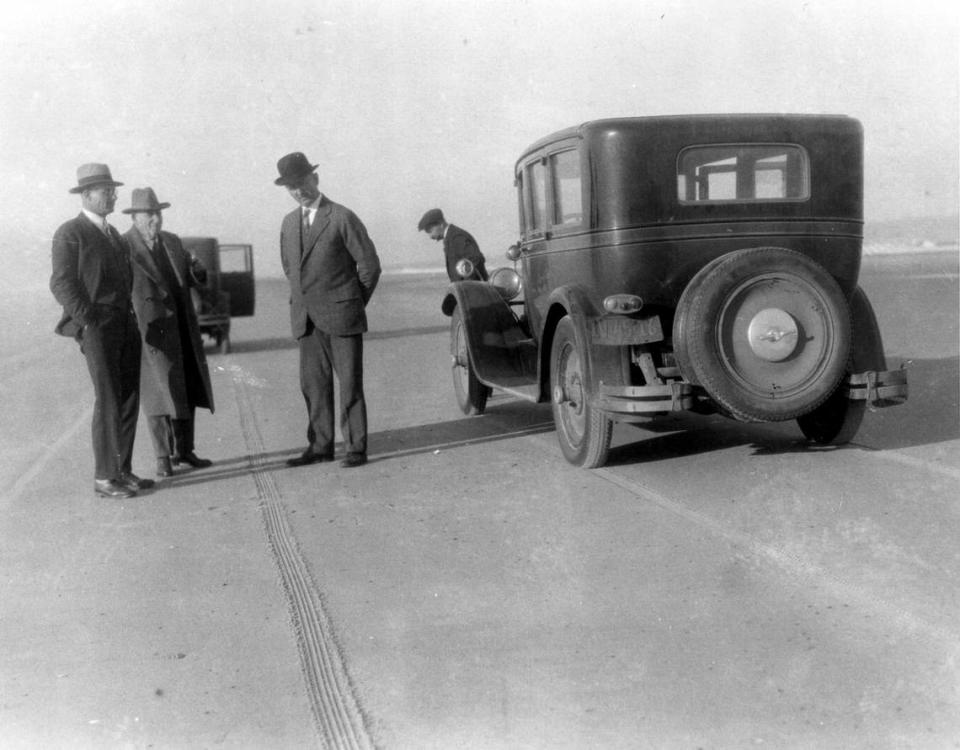
That shift in livelihood and lifestyle can be found up and down the Outer Banks, from the constant stream of high-bed trucks taking tourists to see the wild horses at Corolla to traffic headaches in Nags Head to the docks at Hatteras that start bustling every afternoon as charter boats come ashore, lining up dolphin and tuna and snappers under the sun.
Highway 12 makes nearly all of that activity possible, bringing $1.27 billion in visitor spending to Dare County annually. In 2020, 2.65 million people visited the Cape Hatteras National Seashore — about 315,000 fewer visitors than the Lincoln Memorial and more than attractions like Joshua Tree National Park, Yosemite National Park and Mount Rushmore.
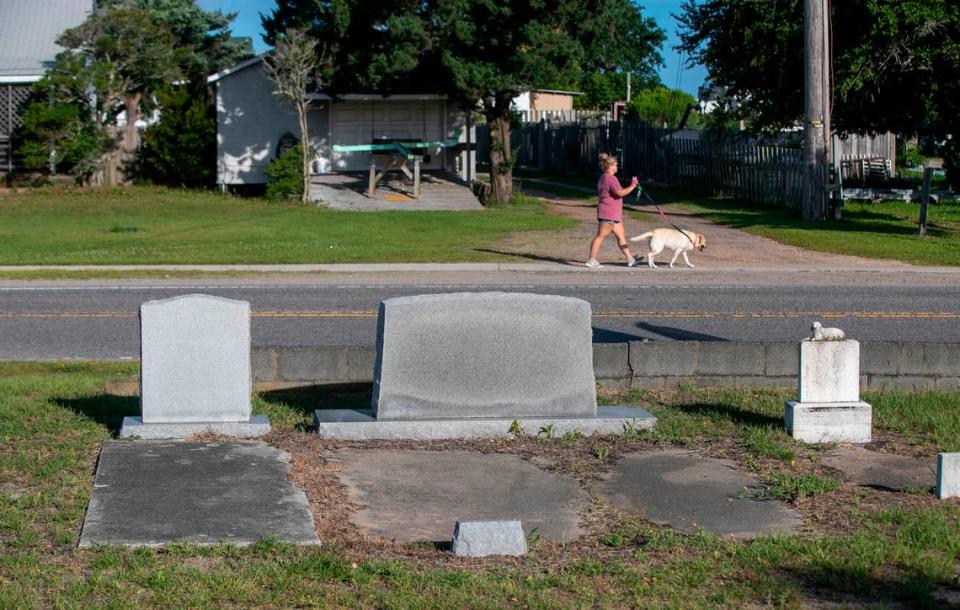
The road also provides a crucial lifeline to year-round residents who depend on it to get to the grocery store or the doctor’s office, or to call an ambulance when they need one. Without the road, many of them say, life on the Outer Banks would be difficult, if not impossible.
Even O’Neal, who doesn’t leave the island for six weeks at a time, said he needs to run up to Nags Head sometimes, scheduling all of his appointments on top of each other when he does.
“Maybe 100 years ago, yes, those people that lived here mainly lived a subsistence way of life — they had their gardens and they had plenty of seafood and there were some local stores on the island, some little ones,” O’Neal said. “But in these days and times, you could never live here like that. [Without Highway 12] this place would just be pretty much deserted.”

Visitors, new and old
On a July afternoon, Nahjae Chapman and Nazir Jones of Kannapolis paced the deck of a ferry from Hatteras to Ocracoke, taking in the sights and smells of the Pamlico Sound and watching seagulls drift alongside the boat.
Chapman and Jones had driven six hours and 13 minutes the day before, spending the night in a tiny cabin at Hatteras Sands Campground. Neither had been to the Outer Banks previously, and they were dining at local restaurants from Avon to Hatteras village while taking in a number of tourist attractions.
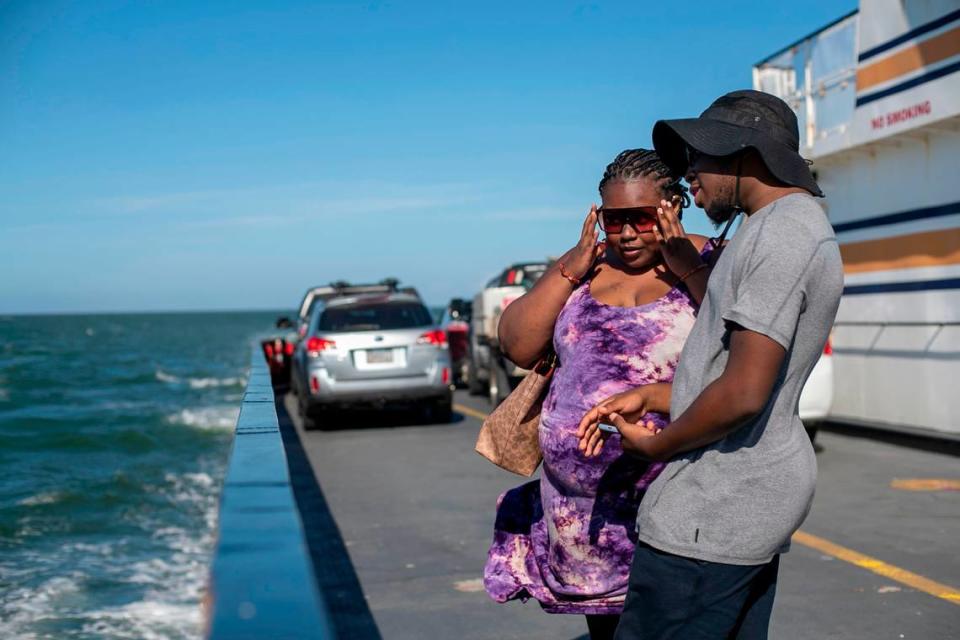
“Every 15 minutes there’s a beach, so that’s the good thing about it,” Chapman said.
The day before, Chapman and Jones had ridden jet skis, visited the beach at Frisco and gazed at the sheer number of stars visible in the clear night sky.
“We love the water,” Jones said.
And there were activities they couldn’t fit in that may merit a return trip. Their kayaking trip had gotten canceled, for instance, and the friends wanted to take in the famous sand dunes at Jockey’s Ridge.
While Chapman and Jones were making their first visit to the Outer Banks, Beth Burns and her family were on an annual trip to Nags Head that they’ve been taking for more than 50 years, spanning at least four generations.
Businesses from Kitty Hawk south frequently list their milepost numbers along with their addresses as a way to help visitors know where they are and where they’re going. Burns and her family have always vacationed between milepost 8.5 and milepost 9.
Since the 1970s, that has meant staying at the Cavalier By the Sea, a one-story brick motor court built in a horseshoe shape around a swimming pool.
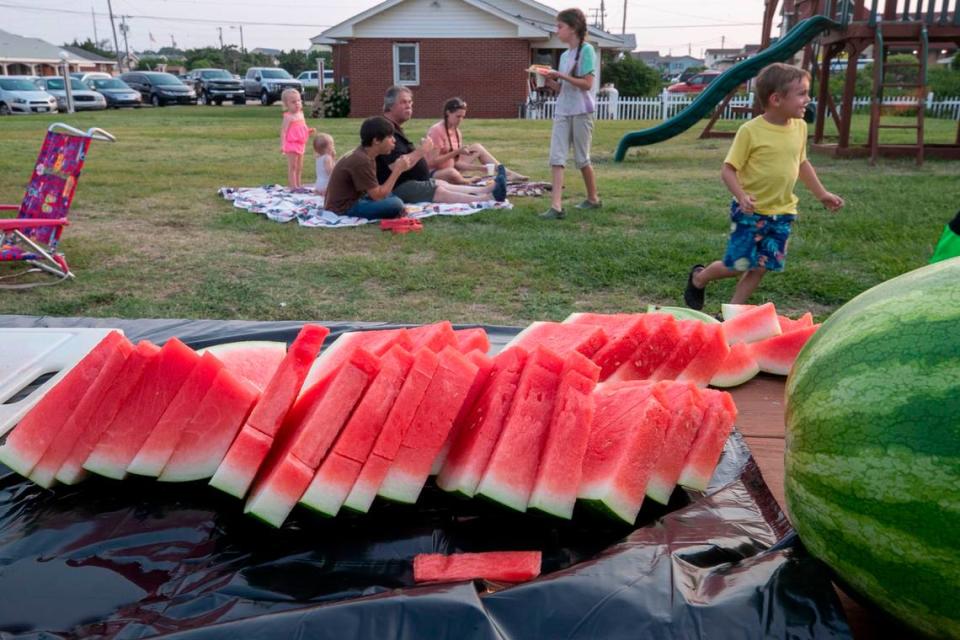
Turn off of Hwy 12 and you’re in the parking lot. Step out of one of the ocean-side rooms and you’re on the beach.
Burns, of Culpeper, Virginia, said she has watched homes in Nags Head swell from small cottages near the beach to super-sized vacation homes that can house a family reunion for a week.
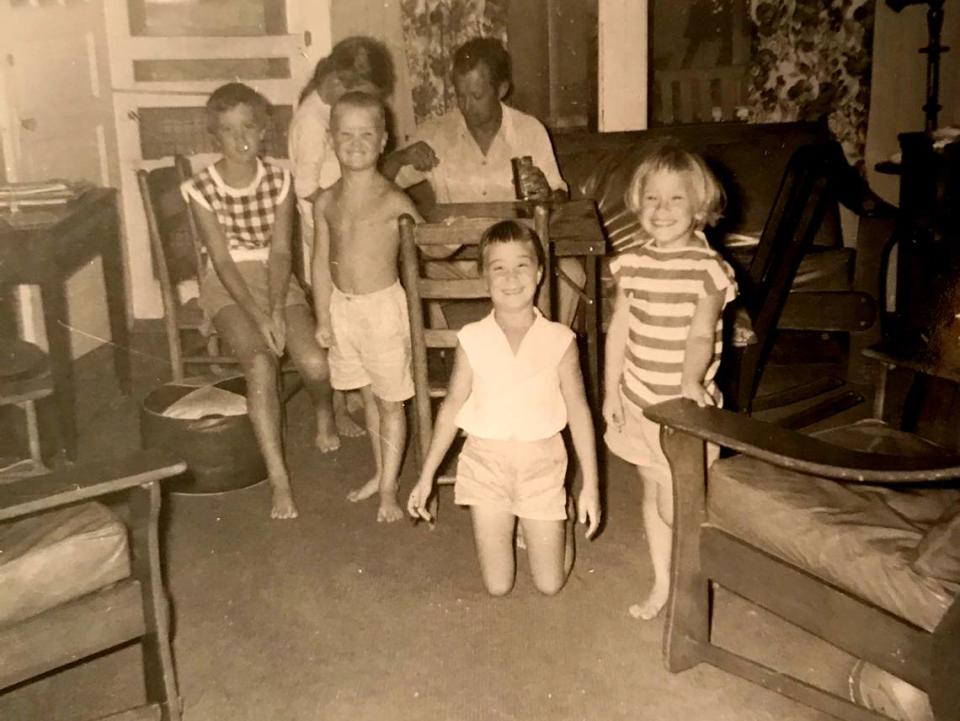
Still, Burns, who is nearly 70 years old, said, “As long as we live, we probably won’t stop going there. There’s just something nostalgic about Nags Head.”
All of Burns’ children and grandchildren learned to swim in the Cavalier’s pool. This summer, it was a 5-year-old granddaughter’s turn.
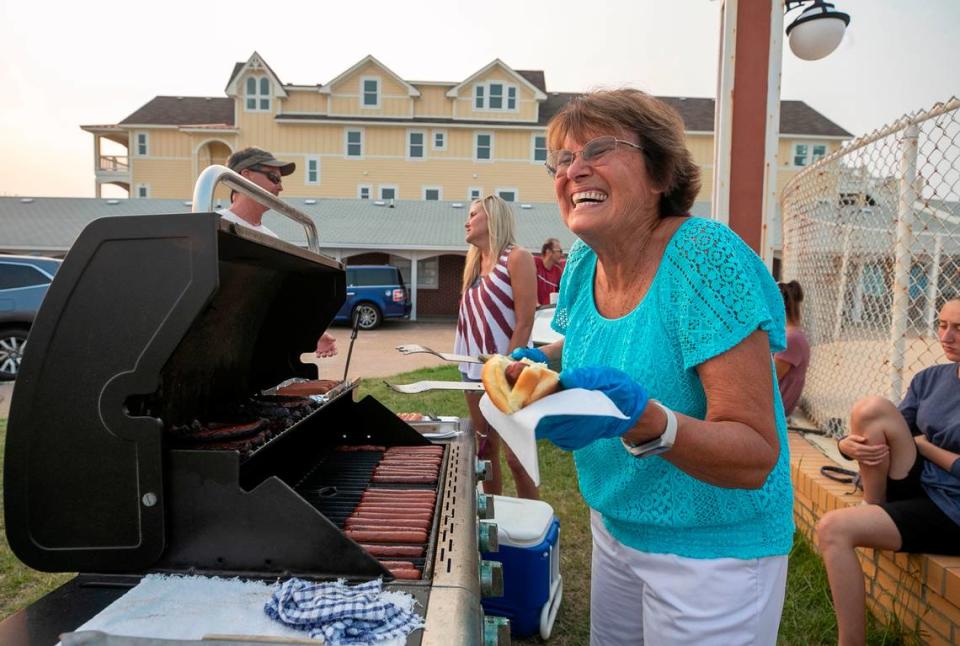
Another tradition, embedded in Burns since she made the trip as a small girl, is to vacation on a budget.
When she was young, Burns visited Oregon Inlet and watched charter boats come in for amusement. Now, her husband makes omelettes for breakfast every morning instead of going to a pancake house.
“We don’t venture out,” Burns said. “We don’t leave a lot of money down there except for the Cavalier.”

Outer Banks seclusion
Cape Hatteras Motel seems to rise from the sand in the northeast corner of Buxton on Hatteras Island. The hotel’s cedar shake buildings straddle N.C. 12, but parking lots on both sides of the two-lane road are covered in sand.
The motel’s ocean-front buildings are about 100 feet from the shoreline. The edge of Highway 12 is about 140 feet beyond that. In documents analyzing the most flood-prone parts of the road, DOT identifies this area as one of seven flooding “hot spots.”
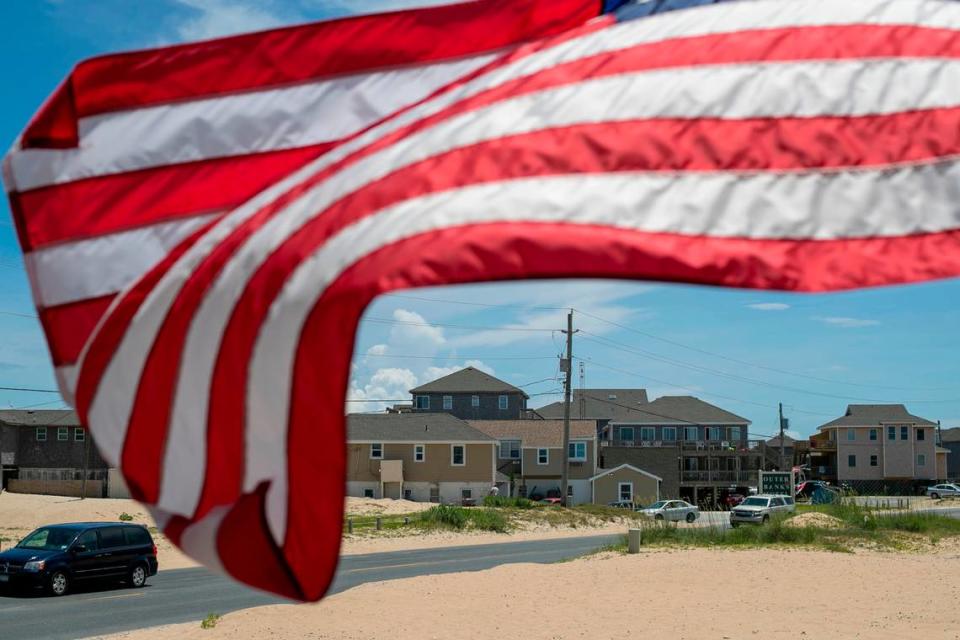
Jan Dawson, who co-owns the motel with her husband, Dave, routinely takes videos of tides reaching to or rushing under the hotel’s oceanside buildings. A video from February shows the surf spilling across the narrow beach in front of the motel, reaching its oceanside stilts. Another clip, taken at high tide during a tropical storm in September 2020, shows ocean water rushing under the motel’s oceanside buildings and crossing NC 12 as a pickup truck edges past.
Dawson’s parents began bringing her to Buxton in 1964, right after the Bonner Bridge opened and connected Hatteras Island with the outside world. The family drove down from Pittsburgh each summer to spend two weeks at the beach.
When Dawson’s parents retired, they moved to Buxton. Dawson moved there in 2015, after her father died, to take care of her mother.
“When we were vacationing here and my mom and dad retired here, it was really a place where you could enjoy nature all times of the year,” Dawson said.
After moving back, Jan started spending more time with Dave Dawson, whose family has owned the motel since 1971. A short time later, the couple was married and running the motel together.
When the Dawson family bought the motel, there were two dunes between the buildings and the ocean. The dunes washed away years ago, and now staff can tell visitors with great confidence that, yes, they will be staying right on the beach, and yes, the ocean will be close.
“None of us were brilliant enough to have the foresight to know that in 2021, we would be looking at this situation,” Jan Dawson said. “And once you have a living, you don’t just walk away from it.”
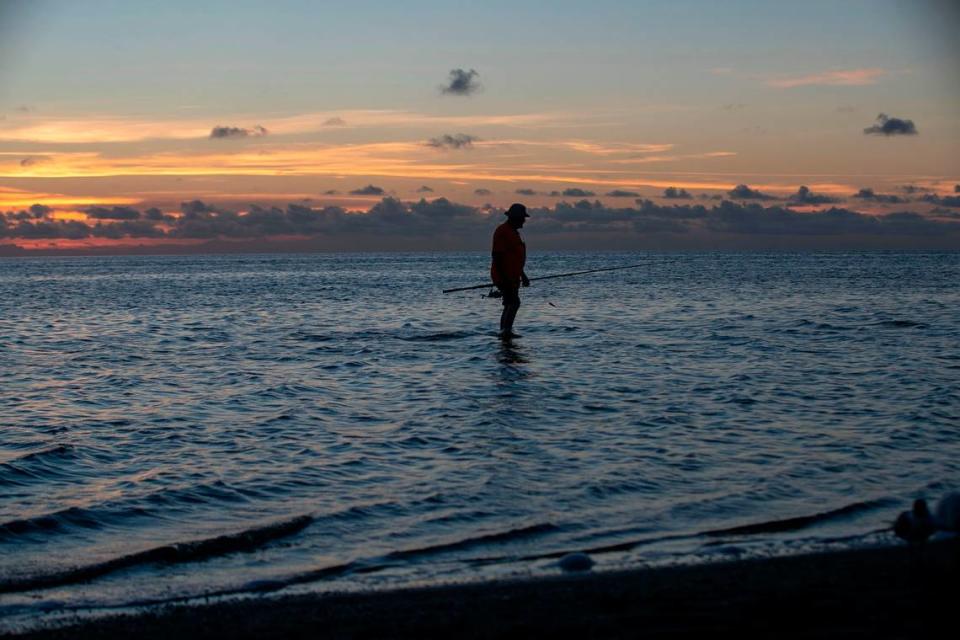
N.C. 12 is ‘a lifeline’
The Dawsons and their employees have learned to adapt.
Dave Dawson long ago cleared the ocean-side buildings of rooms that had been built on the first floor, allowing saltwater to rush under the buildings and through the parking lot without damaging the building.
When a storm is approaching, they call anyone with a reservation and offer them refunds. Those days are hectic for the motel staff members who deliver the bad news, Jan Dawson said. Employees also clean all of the rooms before a storm arrives so they can be poised to reopen as soon as any debris is cleared and the road is open again.
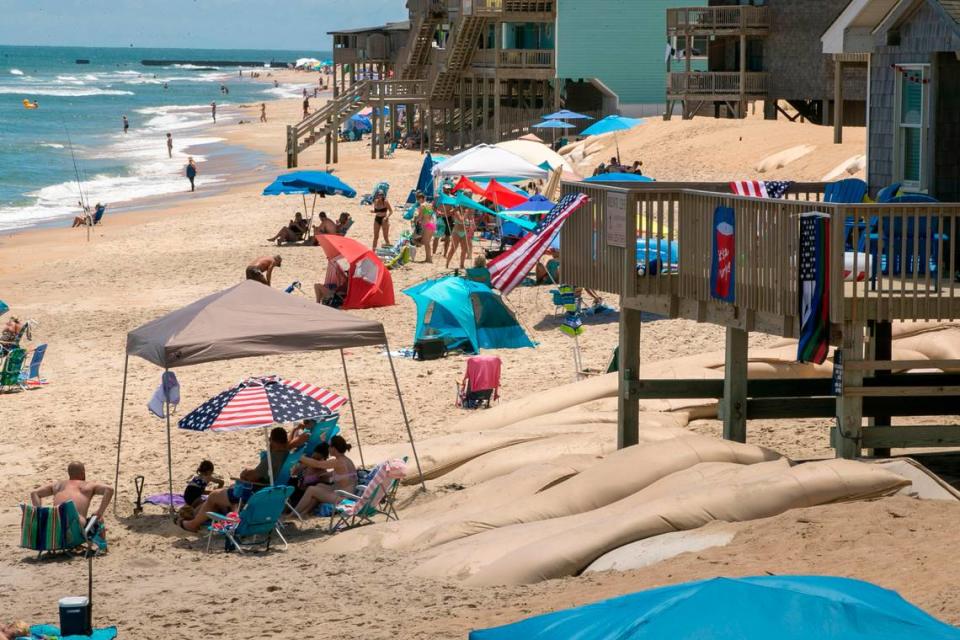
“You can’t overstate the importance of Highway 12 not just for our business, but for all of us who live here,” Jan Dawson said.
When visitors talk about moving to Buxton, Dawson urges them to consider that N.C. 12 is the only way onto the island with a car and that the closest hospital is an hour away on that road.
Dawson asks them what they would do if damage to the road means they can’t get to a pharmacy or how they would handle grocery stores going unstocked for days. She might even tell them about how her mother was taken to the hospital in a helicopter after developing a heart condition in the aftermath of one storm.
“Those are realities that we face every year,” Dawson said, “and it doesn’t always have to be a hurricane.”
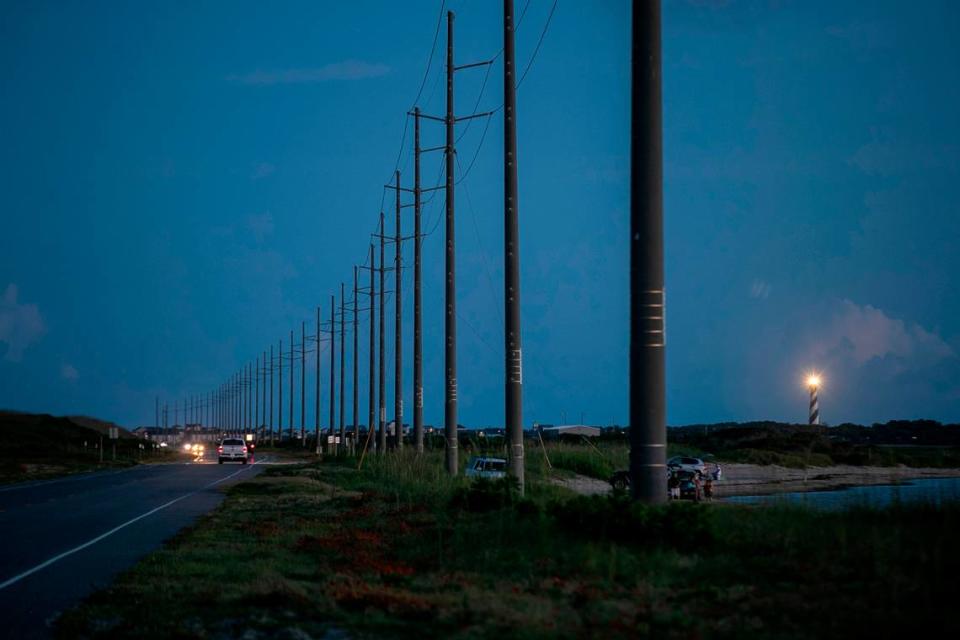
Need ‘crazy timing’ to leave island
On a sunny day just before the Fourth of July, Kelsey Aiken was cutting red drum at Jeffrey’s Seafood next to Hatteras Harbor. Aiken worked methodically, scraping away the scales before measuring and cutting filets.
As Aiken stood at his rectangular metal table, his dog, Fisher, lazed outside in the midday sun.
Aiken’s father, Jeff, opened Jeffrey’s Seafood as a wholesale purveyor in 1988. Today, the family has two fish houses in Hatteras Village.
“We’re still doing the same stuff, just on a different scale,” Aiken said.
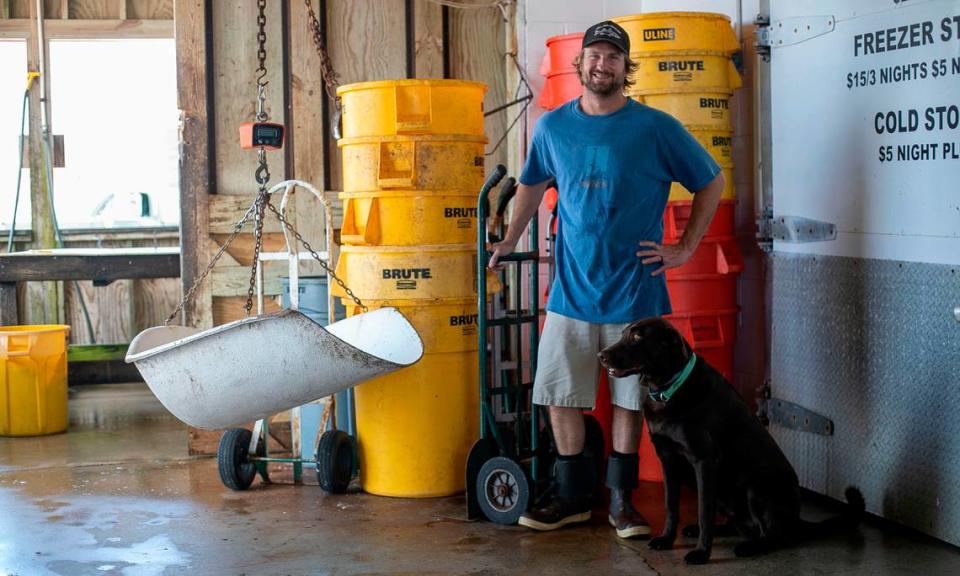
The family’s fortunes are as dependent on N.C. 12 as they are on the village’s commercial fishermen bringing a haul back to harbor.
When a threatening storm prevents visitors from making their way down N.C. 12, Aiken said, the fish house can easily lose two days of revenue in the bustling summer season.
And then there’s concerns about the business’ wholesale trucks, which depend on the road being clear two or three days a week to deliver fresh-caught fish as far north as Hampton, Virgina. From there, the fish is shipped to far-flung places like Canada and California.
A key point of concern for villagers in Hatteras is the strip of road between the village and Frisco, where the distance between the ocean and the sound can be about the same as the distance from home plate to straight-away center field in a major league baseball stadium.
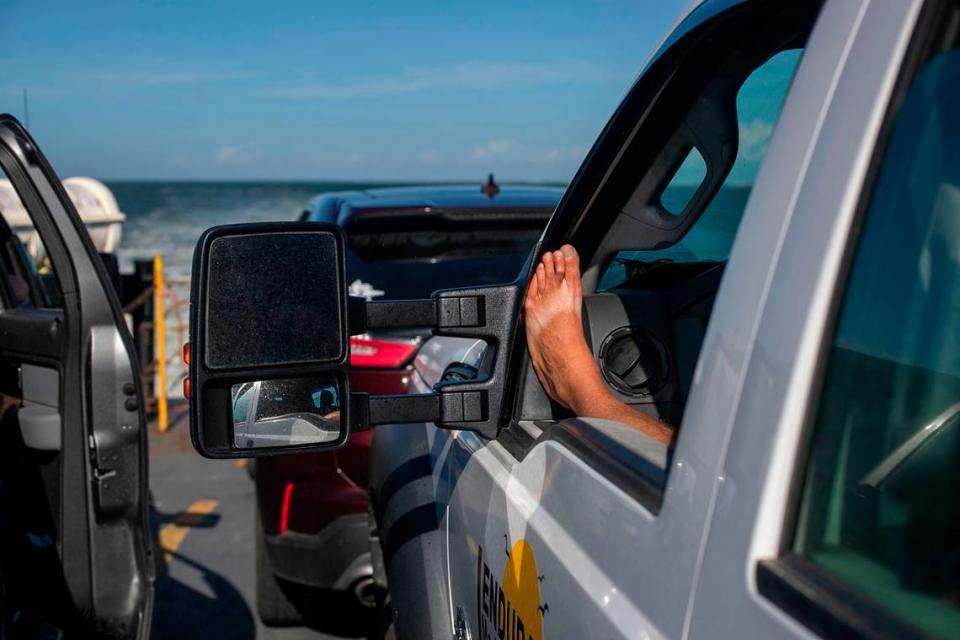
If a wind blowing from the southeast pushes ocean water over the dunes onto that thin stretch of road, Aiken said, villagers often stay in place rather than subjecting their cars to the water. That span of road is also vulnerable to sound-side flooding when winds are coming out of the northwest.
Aiken’s wife, Kelly, is the nurse at Cape Hatteras Secondary School in Buxton. If a storm looks bad, he said, she stays home.
“It’s not a matter of whether you can get through or not,” Aiken said. “It’s a matter of how much money do you want to spend in the next six months?”
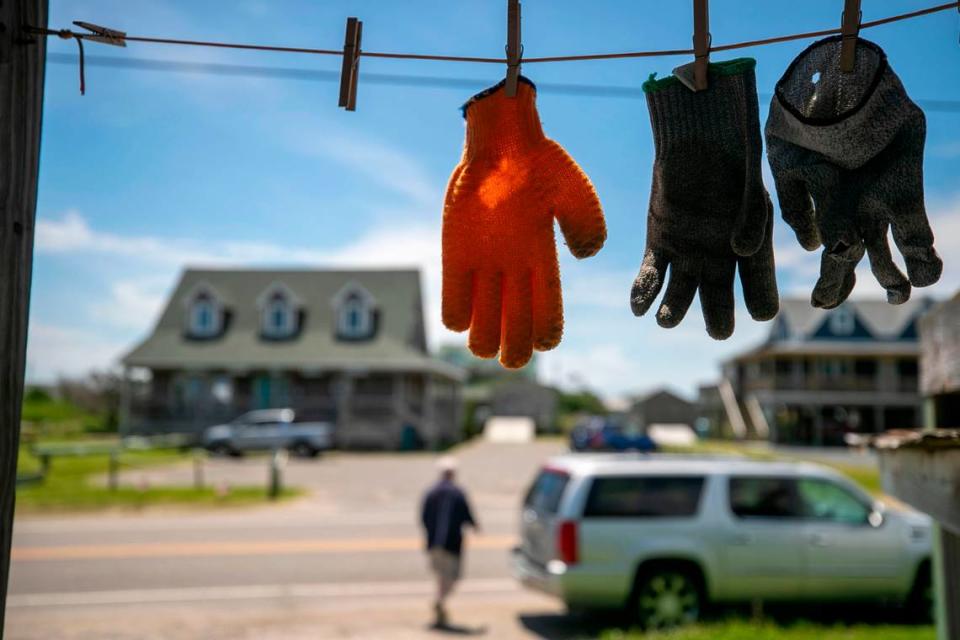
Further north, at Rodanthe, winds out of the northeast cause overwash at an area known as the S-curves. That flooding caused a problem for one of Aiken’s crews who were trying to make a delivery right after a nor’easter late last fall
The crew was the mercy of the tides, able to squeeze up the sandy road at low tide but stuck again at high tide.
“There’s people waiting in line, stacked up, ready to get out of here, ready to get on here … and they would open it up and post it online and people would just haul butt through there and hope to get off and on within the time of the tide frame,” Aiken said. “It’s crazy timing.”
Similar situations happen two or three times per winter, Aiken said, with hurricanes also bringing commerce to a halt in summer and fall.
“It’s our lifeline,” Aiken said of Highway 12. “It’s the only way we can get in and out of here except for the Ocracoke Ferry — and that’s just not going to get you very far.”
Reporting for this story was supported by a Southeastern U.S. Ocean and Climate reporting grant from the Institute for Journalism & Natural Resources. This story was also produced with financial support from 1Earth Fund, in partnership with Journalism Funding Partners, as part of an independent journalism fellowship program. The N&O maintains full editorial control of the work.
